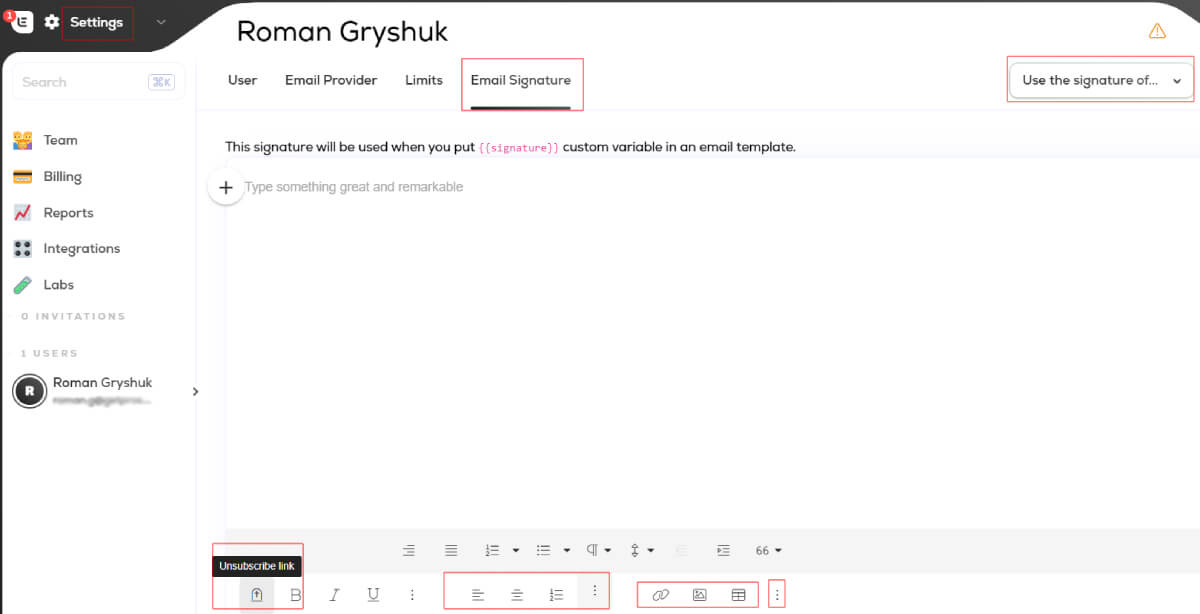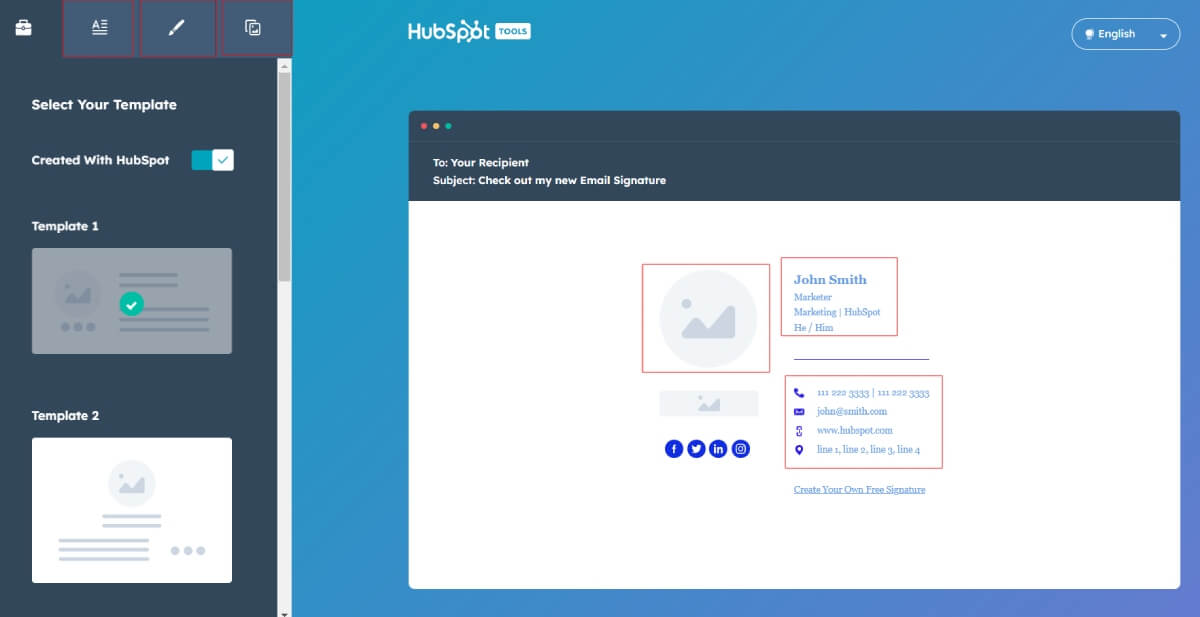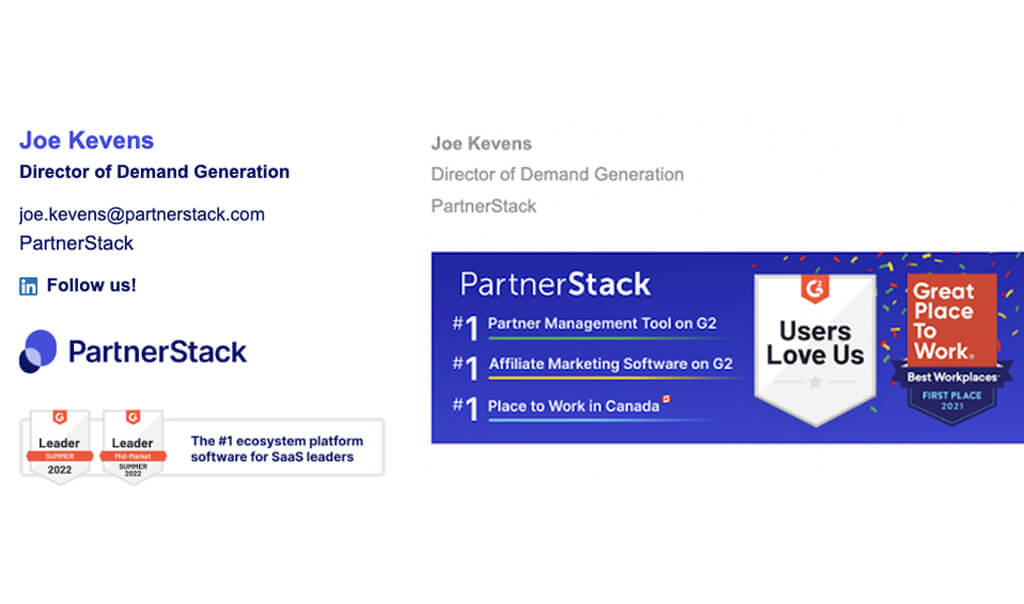Picking a closing line for email messages may seem like no big deal. Usually, people have formal options that are likely to fit and show respect to a customer. However, when everything looks simple, you have even more chances to make a mistake and, thus, a bad impression.
The last part of your email is as crucial as the intro or the body. If you care about the image a lot, you will have to end an email perfectly so that the last sentences will contribute to your key message.
Read on to learn how to finish an email and what email ending examples would suit your business the most.
How to close a formal email?
To close an email, you should consider the three parts that a polite email ending consists of:
- closing line,
- sign off,
- signature.
In this regard, here are the crucial steps to end email professionally:
- Step 1. Pick an appropriate closing line that suits your plan
- Step 2. Select a sign-off reflecting your relations with a customer
- Step 3. Include a signature with your information
Step 1. Pick a suitable closing line
The closing line is a sentence or couple of sentences that illustrate your concluding thoughts, emphasize the main idea, and reflect your plans regarding the business operation, collaboration, or offer.
It helps the recipient understand that you're not saying goodbye forever. Instead, you underline: «I am about to end this email for now, but hope we will continue our cooperation or come to a decision in the next one.»
Notably, as it is a separate paragraph with the goal to wrap up an email, it underlines the essential information and ensures that the reader will not disregard the matter. There, you are to establish the tone and mood for the further emails you are to send to your target.
For instance, if you are determining a time for the demo or meeting, your closing line for the email should lead to the invitation for the call and encourage this person to join.
Imagine other scenarios: you are approaching with an offer or asking for collaboration. Accordingly, the email ending lines would convince and reassure the person that you are ready to collaborate and are serious about the offer you discussed.
In the end, your choice of the closing line largely depends on the objective you are after.
Step 2. Choose a sign-off
The next step contemplates selecting a good sign-off. What is a sign-off?
The sign-off is like an indicator or a sign announcing that the email is about to end. The popular words to end an email are: with regards, sincerely, all the best, etc.
However, will the closing line change if you are writing an email to a B2B lead or executive manager? For sure! The explanation is that, in most cases, the sign-off is subject to the goal and type of email as well.
Communication with friends, colleagues, or business actors you know well can end with such a word as «Cheers» and be appropriate. Yet, in formal business emails, you should avoid such expressions.
Chloe Brittain, the Owner of Opal Transcription Services, would agree with us, underlining the impact of the informal sign-offs:
«As a blog owner myself, I'm not a fan of receiving pitches with especially smarmy sounding sign-offs like «Ciao, lovely!» and «Cheers» is done to death.»
Thus, if you don't know the person and contact them via cold outreach, your options to finish an email are «Thank you,» «Kind regards,» or «Sincerely.
Moreover, when writing to a recognized expert, it can have other forms. Jump to the section below to see different options that vary depending on the relationships you have with the recipient.
Step 3. End with your signature (title and name, contact info)
Lastly, you will likely add your signature to an email showing the details, thus, improving trust. What is meant under the signature?
Well, the signature is the section or block of the text at the end of the email containing the business information or contact details.
Obviously, if you are writing to an old business partner, the signature will have little effect.
Nevertheless, if you are using outreach often to get leads via email marketing and send emails in bulk, your signature phrases can significantly impact the response rates and future communication. Alongside outreach strategies you would use, remember to develop a 3-4 lines block to show who you are.
Once a prospect has some details about you, they can start the research and ensure that you are credible. The signature underlines your status and offers all the necessary details that the recipient of the letter wants to know about you.
What does a signature block contain:
- Sender’s name and surname
- Their job position or title
- The email address for further contact
- Other contact details: phone number or ID in a messenger (optionally)
- Links to their social media or website
- Links to their company (optionally)
- Photos or logos of the company (optionally)
- Social proof (optionally)
Note. To create an appealing signature, you may add some customization.
To develop unique signature phrases or customize the existing ones, you can use Lemlist or Woodpecker built-in sections, create a document in Google Docs, or use HubSpot Signature Generator. For instance, here is what the Lemlist Signature section looks like:

There, you have various options:
- adding pictures and icons
- writing several lines with your details
- creating a column and fitting all these elements in it.
Also, you can integrate the social media icons below and link them to your actual pages. Finally, you may add some color, make the table border lines invisible for greater readability, and even insert some emojis.
Another tool you may consider is the HubSpot Generator. It has a similar function and is pretty easy to use:

Moreover, you have an option of using Google Docs to design signature phrases, applying the same techniques. However, do remember that you will need to insert the created piece into the «Signature» section within the general settings of your email account or software.
Social proof in signature phrases
A signature is a great place to insert social proof adding to the image of your company.
Joe Kevens, Director of Demand Generation at PartnerStack and the Founder of B2B SaaS Reviews, shares his secrets on this matter:
«The way that we've chosen to end our business, cold outreach, and sales emails is with an email signature that includes our most compelling social proof: that we're rated #1 on G2 in our category. Email sign-offs are an opportunity to build trust and credibility with the recipient and even nudge them to take action.»
Here is how he customized his signature for business emails closing:

Best closing lines for emails for various goals
Email marketing serves the business strategies of the different departments. For instance, content specialists may want to do guest blogging, and PR experts may want to thank the bloggers for online product recognition.
Simultaneously, marketers can share messages to promote content, while lead generation specialists are likely to apply outreach and send offers to prospects.
Put prospects names and companies and get verified emails
Get emailsIn each case, the proper closing will be essential for getting a response, building relationships, or encouraging action.
Email closing phrases when asking or requesting
Let's consider the email in which you are making a request or asking to connect. First of all, such emails are about being polite and respectful. In this regard, the words of Shaun Connel, the owner of Connel Media, underline that gratitude can be used to your advantage:
«Sign-offs can be catalysts for action when they include a gentle reminder. As humans, we respond to visual cues. I believe gratitude helps people feel positive emotions, making them see you in a more pleasant light, which is essential when asking for something.»
Thus, you should consider thanking the recipients for the time or effort they spend reading your message.
Phrases to conclude an email and use «thank you» to restate your offer:
- «Thank you in advance/for your time/for consideration of this….»
- «I appreciate your time here...»
- «In any case, thank you for your help….»
The particular email closing lines are great if you ask for help or cooperation. At the same time, they leave some room for underlining what you need. For instance, you may say:
-
«I appreciate your time here and would be glad to work together.»
or
-
«In any case, thank you for your help. I am looking forward to your reply.»
Each of the particular messages uses gratitude to be polite and restates the goal of the message later in the sentence.
Simultaneously, if you are to ask a specific question or specify some details regarding an offer, collaboration, or agreement, bring the following phrases to the table:
- «I would appreciate it a lot/be grateful if you could...»
- «I hope this is possible….»
- «I would appreciate it if you… and come back to me with an update.»
That way, you again underline that you value the recipient's time and emphasize the matter of your address.
Ways to end cold outreach emails
The previous ways to end an email are effective when you know the recipients. It also works when it is the third or fourth time you are writing to them.
Nevertheless, what to do, if you reach out to a person for the first time and they do not know you? It is a common practice for marketers, lead gen specialists, or professionals under the cold outreach strategy.
When you send an email to a person you don't know, it is crucial to respect the boundaries by not being pushy or aggressive. Also, a good tactic is to use a question in the closing line for email messages to encourage people to reply to them.
How to close a cold email:
- «If you are interested in such a cooperation, please let me know. I will be glad to share more details.»
- «I'd be happy to show you details/plans/features; please specify what time will be suitable for a call?»
- «If my proposition finds you well and you are interested, please let me know.»
- «Are you interested? Please, pick any time within my calendar that suits you so we can discuss details.»
You can say that these variants of email ending lines for cold emails are pretty general. It is true, and they are similar to the ones used by salespeople.
The cold outreach usually contemplates that you connect with people, offer your pitch and tell about yourself. There, your main goal is to interest a person and continue the communication.
Is there any room for personalization?
Yes! Do not hesitate to apply personalization or insert specific comments when writing email ending words. Why? To hook the recipient, as the general phrases mentioned above are used a lot.
Susan K Shaffer, the President of Pneuma Nitric Oxide, shares her approach regarding this question:
«I personalize my sign-offs so that I can always leave the person feeling special and cared about. For example, simply putting their name in my sign-off makes a huge difference.
«Looking forward to hearing from you,» vs. «Thanks again for your time, Wendy. I’m looking forward to hearing your thoughts.» It’s basically the same thing, but adding Wendy’s name (plus a little heart) makes it feel completely different and will grab Wendy’s attention.»
Besides, your email ending lines can be effective if they are specific. Milosz Krasinski, the Managing Director at Chilli Fruit Web Consulting and blogger, emphasizes that personalizing and being specific can help you appeal to the reader:
«The most effective email endings are ones that are personal and specific to the recipient. For example, if you are sending an email to a business partner, you might use an ending like «Good luck on the [Project]!» This shows that you are thinking about the person and their needs.»
As a result, a closing line for email pieces that puts the interest of the recipient in the center can encourage them to reply to you. Therefore, you should try to insert a call to action and end an email indicating the subject you want to discuss.
Closing line for email expressing gratitude
People love when you appreciate their efforts, and expressing gratitude is significant to building a good relationship with them.
Firstly, if you use email marketing for sales, you can thank them for the subscription or purchase. That way, you can add to the customer experience.
Secondly, if you use it for promotion, your emails are likely to thank for backlinks, content, tags, or publication.
How to thank the recipient of the letter?
- «Thanks again for the publication of/sharing our content. We would be glad to continue our cooperation in the future.»
- «Thank you for using our page as a reference. We have more materials and case studies if you are interested.»
These email closing phrases show that you can utilize the occasion to establish deeper connections for fruitful cooperation in the future.
Also, you can use lines expressing gratitude to improve customer experience. For instance, the following closing line will show that you value what people think of you:
-
«Thank you for your insights/ report/ comment, we will investigate the issue and come back to you with an update.»
At the same time, to wrap up an email and thank a prospect or a client for showing interest in your service or product, you can insert the following closings:
- «We appreciate that you have shown interest in our product and will be glad to answer any of your questions.»
- «I appreciate your time spent here….»
- «Thanks for subscribing to us; now you can get…/ you are a part of our community/…, tune up for more materials.»
Even the welcoming letters need an appropriate closing as they are likely to contribute to the beginning of a customer journey by setting a tone of voice and showing that you are on the same page. You can use some slang there, adding some style or using words that your audience will find appropriate.
Email endings for building relationships
Also, sometimes you need a closing line that will end an email politely and allow you to underline that you are ready for further dialogue. With this in mind, you can insert the following phrases:
- «Thank you for connecting/Thanks for the chance to talk to…»
- «I would be glad to continue our cooperation.»
- «I am looking forward to our joint projects in the future.»
Email ending examples used in sales or lead generation
In sales, the objective of an email depends on the stage of the customer journey the recipient is at. In particular, the lead generation email will have one goal, and the prospecting or nurturing email will have another. It means that your closing line for a cold lead, a warm lead, and a qualified prospect will vary.
From there, a lead generation specialist will test the effect of the various email ending examples and design each one in accordance with the goal of the campaign. Yet, how to conclude a formal email aimed at leads?
How to end lead gen emails with the general phrases:
-
«We would be happy/delighted/excited to have you as a customer/client….»
-
«We are here to help you provide solutions/answer to your needs/make your operation easier, thus….»
-
«I know that our product will suit you well/is a perfect match for your needs….»
These email closing examples underline that your company and you value the recipients as future clients and will be glad to help with anything. That way, you show that you are ready to provide value and make this deal work for all parties.
But, wait, the closing line can also become a tool to arrange a meeting, ask for additional efforts, or add clarity.
The cases below will show how to finish an email when the prospects are just showing interest, have doubts, or when you are unsure whether to qualify them for the next stage or not.
Email ending words for qualified prospects:
-
«[Name], thank you for your time. Does it mean that you are ready to proceed with the purchase/order?»
Use it when you know for sure that the prospect is about to become a customer.
-
«I do believe our offer suits your goals. If you disagree, please tell us about your doubts so that we can help you effectively.»
The particular closing line can be helpful when reaching out to the B2B representative or a large business.
-
«I am glad that we managed to set an agreement and confident that it will be a success for both of us.»
This example offers a great way to close a deal and underline the benefits for all.
Email endings to support the interest of the recipient:
-
«As you can see, there is a huge potential for growth, and I am looking forward to this collaboration being a long-term success.»
The particular phrase is great to conclude your thoughts on possible B2B opportunities, encouraging a recipient to consider the purchase or subscription.
-
«I do hope that I caught your attention and will be glad to provide you with more details.»
This line is similar to the previous one, though less formal.
Words to end email when you or a customer has doubts:
-
«Unless you need more information, I believe we can proceed to the next step and….»
Insert this closing phrase if there is uncertainty on the prospect's behalf and you don't know what it is about.
-
«I am excited with how it is going, but I want to be sure that we are on the same page. Can we arrange a meeting to clarify all the details?»
If you want to specify certain conditions and feel that there is a certain mismatch in terms of expectations, this line will suit your goal.
Closing words for email to encourage the decision or new interaction
Salespeople feel when the prospect is interested enough to buy a product. However, it is a subtle moment, and salespersons should be polite, show that they are willing to help, and provide a comfortable option to set a call.
The way you use words to end an email can either encourage or discourage the prospect from proceeding with the purchase or a new round of communication.
-
«I will be glad to give you even more details and show some features on a call/demo. Would you like to set it on….?»
-
«Please, let me know if you need a demo/call for more details. We are ready to schedule it for next week. What time will suit you?»
-
«Please, let me know if that is acceptable with you/ we should arrange a different date/ if you need more time.»
-
«I will be glad to tell you more about the product. What will you say to arrange a call/demo on any date from my calendar?»
As you can see, the majority of examples provide freedom to the customer and do not push the closure of deals. For it, you always have the follow-up strategies that can be used.
Best way to end a business email
Here are the best ways to end a business email with sign-offs, whether you are sending a cold email for the first time or continuing your communication:
-
Thank you/thanks/thanks in advance - the classic sign-off to use unless you already used it in the email body.
-
All the best - a good option when you connect to new people.
-
Regards/Best regards - if a recipient doesn't know you and you want to be extra polite, apply them.
-
Best wishes/Kind regards - these are similar to the previous ones but are less formal.
-
Sincerely/Yours sincerely/Sincerely yours/Respectfully - formal sign-offs that will be applicable when you are writing to a professional or well-respected expert.
Interestingly, despite the fact that these sign-offs should reflect your relations with the recipient, the particular study shows that closings with «thank you» variation have higher response rates than other phrases.
How to close professional emails (our examples)
When you conclude a formal email, you should clearly understand your goal and reflect on the relations with the recipient. Besides, inserting the name and the position is important to making the right impression. Here is how GetProspect closed the B2B emails within the lead generation funnel:
Sign-off Example#1
|
Hurry up! Offer valid until the end of this week and limited in quantity! Write to me to book a navigator or a discount! ____ Best regards, Alex Sivalova IT Sales Representative GetProspect |
The email ending sentence is pretty straightforward, yet, not pushy or over-promotional. Why? It reflects the mood of the letter, focusing on the limited offer GetProspect provides. Besides, the person is already a GetProspect customer who is offered a discount based on their available plan. That way, the closing line only reinforces the message and encourages the person to proceed with a new deal.
Sign-off example #2
|
Please, contact me if you have questions or if my offer is attractive to you. Thank you. ____ Best regards, Alex Sivalova IT Sales Representative GetProspect Kyiv, Ukraine UA +3807******** (the number for sales) Find me on LinkedIn (a place to insert a link to our social media) |
These email ending words show that your message can be concise and get straight to the point. After providing the solution, an insight that should help the customer, we left room for consideration. Also, we included essential details (phone number and LinkedIn link) as a part of the signature, as we encouraged the person to reach back to us.
Sign-off example #3
|
If you have more questions, we could arrange a short call to discuss them. ____Best regards, Alex Sivalova IT Sales Representative GetProspect |
As the email offers a different experience for a lead generation professional, it focuses on the benefits and should be clear. Thus, the last one of the ending email examples is pretty short and jumps right to the matter of closing a new deal.
As a result, we tend to choose simple words to end our emails and try to be formal. The reasons derive from the tone of voice and our company's target audience. We know how important time is and want to be clear and professional. The sign-offs and signatures we use are pretty standard, even though we can change them for more clarity or effect on the recipient.
Summary
- To end an email professionally, you need to craft a concluding part where you: express your thoughts regarding the content you state, indicate the end of the email with the correct sign-off, and include the signature matching your image.
- The proper closing is essential for getting a response, building relationships, or closing a deal, implying that the closing lines vary depending on the type of email.
- Expressing gratitude in a closing line is vital for building relations and requesting, while «thank you» variations of sign-offs often get higher response rates than other types.
- When writing B2B emails, understand your goal and reflect on the relations with the recipient. That way, you will be able to provide a relevant closing line and signature contributing to the customer journey of the recipient.


